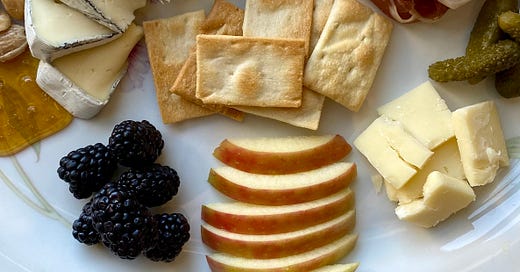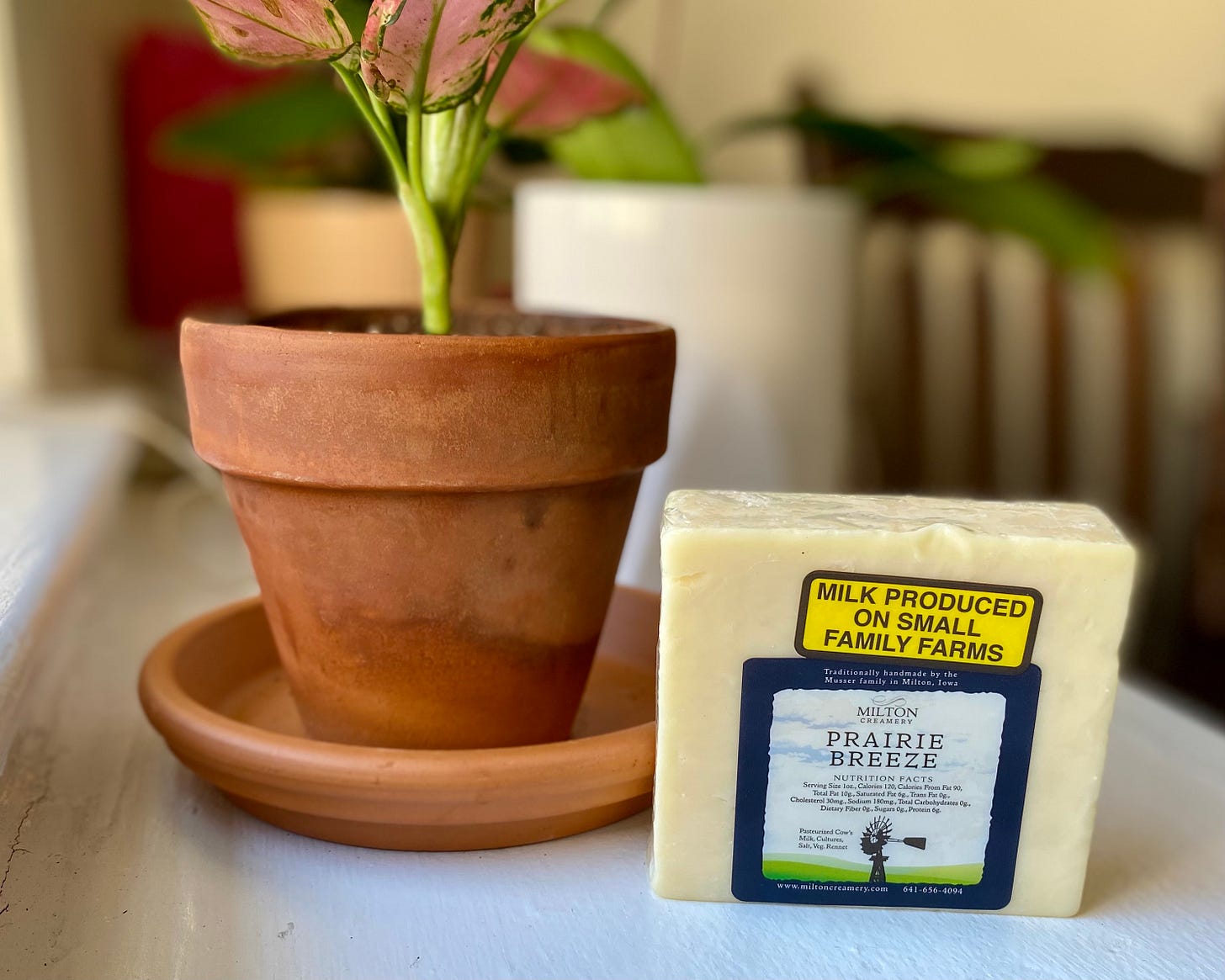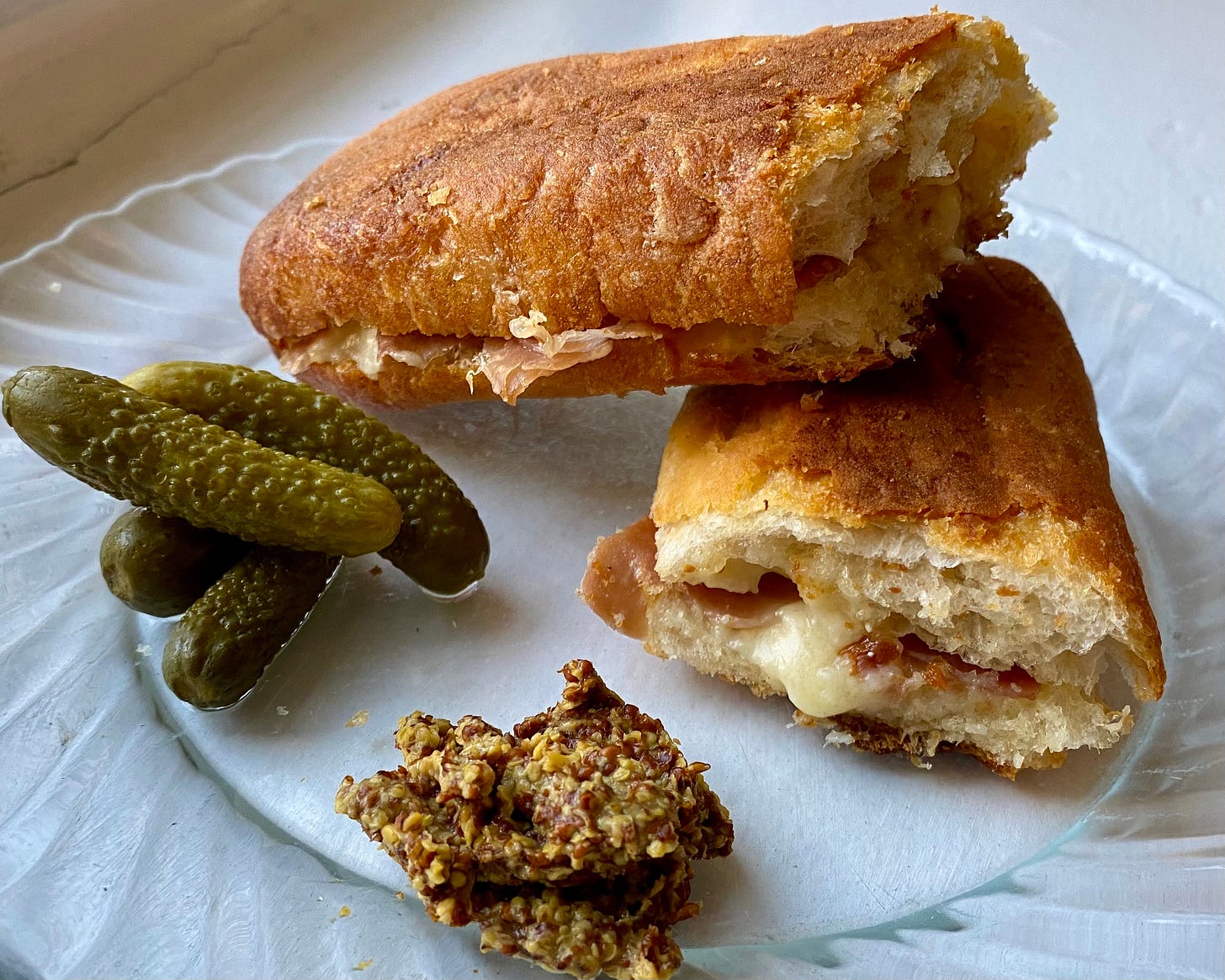Texture: creamy, crystally
Milk type: cow
Flavor notes: sharp, spicy cheddar
Place of origin: Milton, Iowa
One of my favorite cheese facts is that orange cheese is not naturally orange — it's dyed — and there is no actual flavor difference between cheese that is dyed orange and cheese that is not. Some artisan cheesemakers dye their cheese as a nod to tradition, while some mass-production cheesemakers dye their cheese as a marketing shtick. Artisan cheesemakers will typically use annatto, a natural dye, to achieve the look.
The story behind the tradition is that in 17th century England, cheese produced using summer milk (when the cows were eating fresh green grass) was considered better than cheese produced using winter milk (when the same cows were eating dry hay) because the summer milk produced cheese with a deeper golden hue than the winter milk. Due to this perception, cheesemakers were having a harder time selling their winter stock, so to "color correct," started dying their cheese orange, which allowed them to produce cheese that was the same color year-round. NPR nefariously deemed this "fraud," but when I first heard the story it was presented more as a funny trick.
To be fair, every batch of artisan cheese will taste slightly different and the cows' diet plays a large role in that, so the people weren't wrong if they claimed to taste a difference. But the fact that dying the cheese worked shows that most people weren't thinking that hard about the nuance of cheese tasting. (Not us!)
I bring this up because this week we are eating a white cheddar from Milton Creamery in Iowa, the award-winning Prairie Breeze, and the fact that we think of it as "white" cheddar feels very silly knowing that story.
Prairie Breeze stands out for its texture. It's creamy and crunchy, packed with calcium crystals. Typically you expect crystallization in harder aged cheeses, so the creamy + crunchy combo is an unexpected treat. As far as flavor — it tastes like a very sharp classic American cheddar. To me, it has a kind of spiciness to it that gets stronger the longer it lingers in your mouth. Milton Creamery says it has "nutty tones" and a "fresh canned pineapple scent," and I agree with the scent, but my palette is not sophisticated enough to pick up on any nuttiness. It's good if you're looking for a cheese with a strong flavor but no funk.
Added bonus: Prairie Breeze is also a true vegetarian cheese made using vegetable rennet. Rennet is the enzyme used to turn milk into cheese. It most often comes from animal stomachs, so many cheeses are not totally vegetarian.
As you can see from the loud yellow label, Milton Creamery uses only milk from small (less than 120 animals) local (within a 30-mile radius) family farms with cows who are never treated with artificial growth hormones. They also express positive values by caring for the environment and for their community (see "The WHY" in their Insta story highlights). Heartwarming!
How to eat Prairie Breeze
Cheddar is versatile, but if you want to get the most out of this particular cheese's texture, take it out of the fridge about 20-30 minutes before you're ready to eat it and pile it on some apple slices with a touch of honey. Add prosciutto if you're so inclined. Play into Prairie Breeze's crumbly nature by thickly slicing it then breaking it apart into smaller rectangles for visual intrigue. This would also make a decadent sandwich on a baguette.
Alternatively, as you are — I'm sure — well aware, cheddar is also an excellent melting cheese, and Prairie Breeze is no exception. Take it the savory route on a grilled cheese with fancy bread. Add rosemary ham, turkey, or tomato. Serve it with a side of seedy mustard and cornichons. Eat it on burgers, in mac and cheese, or in any recipe that suggests melted cheddar.
Are you dying to try Prairie Breeze? I say this every week but — check your local cheese shop or grocery store cheese section. I got mine at my local Balducci's. If you want to buy online, Milton Creamery ships, as does BKLYN Larder in NY and iGourmet.




